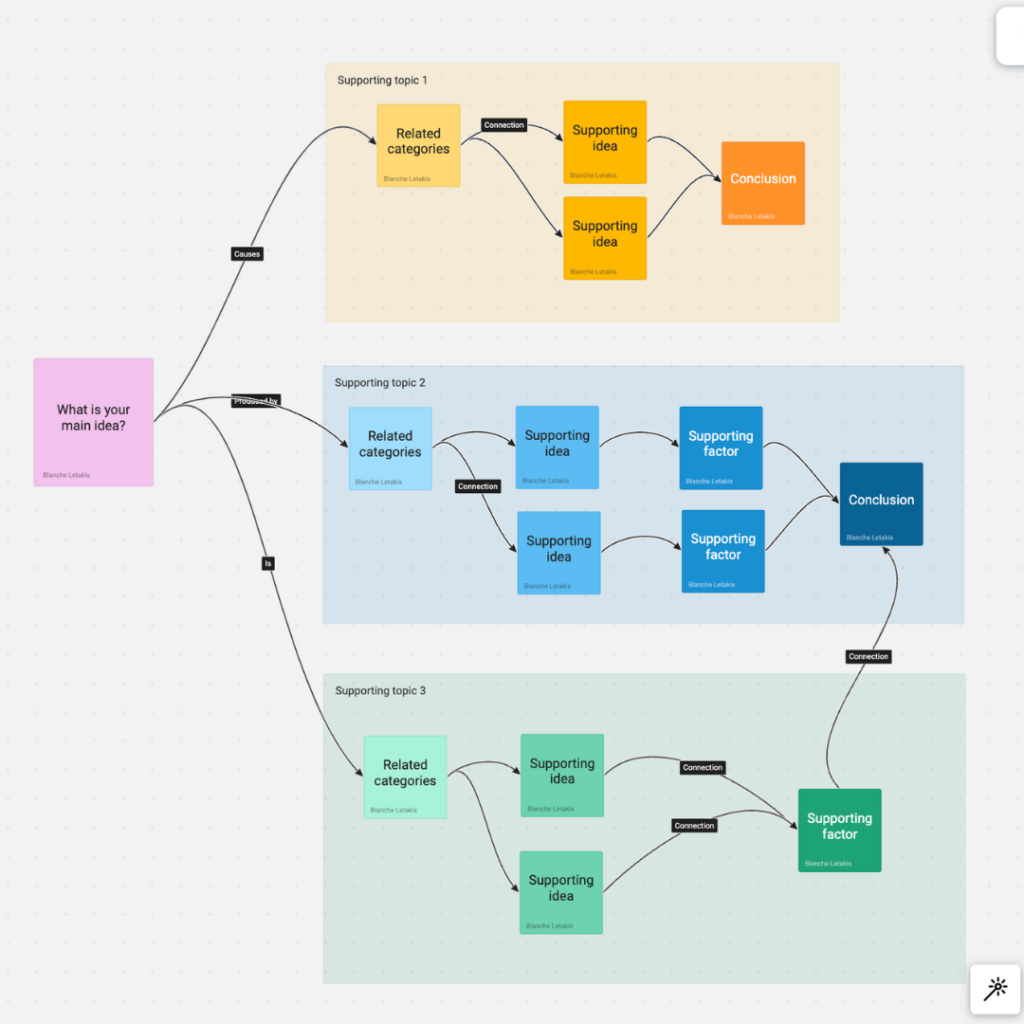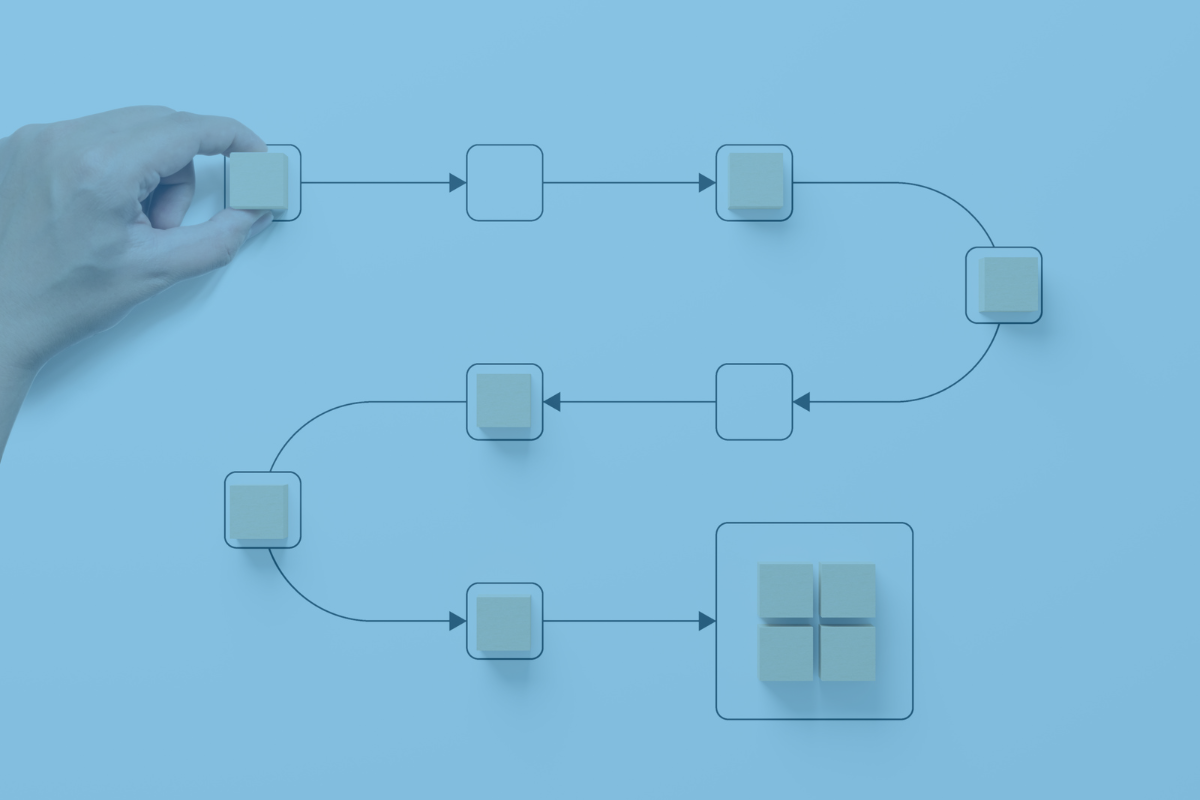Concept mapping is an invaluable tool for structured thinking and visual organization. Whether you’re a student, educator, business professional, or anyone in between, understanding how to make a concept map can significantly enhance your problem-solving skills [Link to pillar post] and strategies. Here we’ll dive into the intricacies of creating a concept map, with a particular focus on utilizing Frameable Whiteboard, an online whiteboard tool offering a variety of professionally designed templates to make the process seamless and efficient.
Understanding Concept Maps
Before diving into the creation process, let’s define a concept map. A concept map is a graphical tool for organizing and representing knowledge. It includes concepts, usually enclosed in circles or boxes, and relationships between these concepts are indicated by a connecting line linking two concepts. Words on the line, referred to as linking words or phrases, specify the relationship between the two concepts.
Concept maps are rooted in the theory of meaningful learning developed by David Ausubel, which emphasizes the importance of prior knowledge in learning new information. By visually organizing and structuring this knowledge, concept maps facilitate deeper understanding and knowledge retention.
Benefits of Using Concept Maps
Enhanced problem-solving
Concept maps are powerful tools for problem-solving. They allow you to break down complex problems into smaller, manageable parts, visually outline the relationships between different components, and identify potential solutions. This structured visual thinking aids in a systematic approach to problem-solving.
Effective problem-solving strategies
By visually organizing information, concept maps help in developing effective problem-solving strategies. You can clearly see the connections and relationships between different elements, which can lead to innovative solutions and strategies that might not be immediately apparent through linear thinking.
Improved structured thinking
Concept maps promote structured thinking by forcing you to organize your thoughts logically and hierarchically. This structured approach is beneficial in various scenarios, from academic research to business planning, as it helps in creating a clear and concise representation of complex information.
Steps to Create a Concept Map
1. Identify the main idea
The first step in creating a concept map is to identify the main idea. This is the central question or problem you want to address with your concept map. The focus question helps to maintain the scope and relevance of your concept map.
2. List relevant concepts
Once you have your focus question, list all relevant concepts (related categories) that relate to this question. These concepts will form the nodes of your concept map. Think broadly and inclusively at this stage to ensure you capture all pertinent information.
3. Organize concepts hierarchically
Organize the listed concepts hierarchically, starting with the most general and inclusive concepts at the top and moving to more specific and detailed concepts at the bottom. This hierarchical structure helps in understanding the relative importance and relationships between concepts.
4. Connect concepts with supporting ideas and factors
Connect the concepts using lines and supporting ideas and factors. Supporting ideas and factors describe the relationship between the connected concepts. This step is crucial as it transforms a simple list of concepts into a meaningful and structured representation of knowledge.
5. Review and refine
Review and refine your concept map. Check for clarity, coherence, and completeness. Make sure that all important relationships are represented and that the linking words accurately describe these relationships.
How to Make a Concept Map Online
Creating a concept map online can be significantly easier and more efficient than doing it on paper. Online tools offer various features that facilitate the creation, sharing, and editing of concept maps, no matter your location. One of the top online whiteboards is Frameable Whiteboard.
What is an Online Whiteboard?
An online whiteboard is a digital platform that allows users to create, share, and collaborate on visual content in real-time. It offers a flexible and interactive space for brainstorming, planning, and organizing ideas visually. Online whiteboards are particularly useful for distributed teams and individuals who need to collaborate without physically being together.
Tools to Make Concept Maps
Several online tools like Miro and Mural can help you create concept maps, but Frameable Whiteboard stands out due to its user-friendly interface, nested cards for structured thinking, affordable price, and real-time collaboration features.
Creating a Concept Map with Frameable Whiteboard

Frameable Whiteboard offers a variety of professionally designed templates, including concept map templates, making it easy to get started. Here’s a step-by-step guide to creating a concept map using Frameable Whiteboard:
1. Sign up and log in
First, sign up for a free account on Frameable Whiteboard. Once you’ve logged in, you can access the wide range of templates and tools available on the platform.
2. Choose the concept map template
Navigate to the recommended templates section at the top of the page and select Show All. A pop-up will show all the templates available for you to scroll and find the concept map template. Once you click the use template button, a new whiteboard with the concept map will open. You’ll find instructions on how to use the concept map template so that you can get started immediately.
3. Customize your concept map
Start customizing the template by adding your main idea, concepts, or related categories, and supporting ideas. Frameable Whiteboard’s intuitive drag-and-drop interface makes it easy to add, move, and connect elements on your concept map.
4. Collaborate in real-time
One of the standout features of Frameable Whiteboard is its real-time collaboration capability. Invite team members to join your whiteboard, where they can contribute ideas, make edits, and provide feedback instantly. This feature is particularly beneficial for collaborative problem-solving, brainstorming sessions, and even task management.
5. Review and finalize
Once you’ve completed your concept map, review it for clarity and completeness. Frameable Whiteboard allows you to easily make adjustments and refinements, ensuring your final concept map is comprehensive and well-organized.
6. Share and export
After finalizing your concept map, you can share it with others by providing a link or exporting it in various formats (PDF, PNG, etc.). This flexibility makes it easy to incorporate your concept map into presentations, reports, or other documents.
Practical Applications of Concept Maps
Education
Concept maps are widely used in education to help students understand complex subjects and organize information logically. They can be used for note-taking, studying, and project planning, making learning more interactive and engaging.
Strategic Planning
In the business, concept maps are invaluable for strategic planning. They allow teams to visualize goals, strategies, and tasks, ensuring that everyone is aligned and working towards common objectives. By mapping out the relationships between different strategic initiatives, concept maps help identify synergies, potential conflicts, and gaps in the overall strategy. This structured visual thinking approach ensures a more coherent and integrated strategic plan.
Project management
Concept maps can significantly enhance project management by providing a clear visual representation of the project’s scope, tasks, and timelines. They help project managers and teams break down the project into smaller, manageable parts, identify dependencies, and ensure all aspects are covered. Using a concept map template from Frameable Whiteboard, project teams can collaboratively plan, monitor, and adjust their projects in real-time, leading to more efficient and successful project execution.
Research
Researchers use concept maps to organize literature reviews, design experiments, and present findings. The visual representation of information helps in identifying gaps, connections, and new research directions.
Unlock the power of concept maps
Concept maps are powerful tools for enhancing problem-solving skills, developing effective problem-solving strategies, and promoting structured thinking. By visually organizing information, they help in understanding complex subjects and identifying relationships between different elements.
Creating a concept map online with tools like Frameable Whiteboard makes the process even more efficient and collaborative. With its user-friendly interface built for structured thinking and real-time collaboration features, Frameable Whiteboard is an excellent choice for anyone looking to improve their structured visual thinking [Link to pillar page] and problem-solving capabilities.
Start exploring the world of concept maps today and unlock your full potential. Sign up for Frameable Whiteboard for free and experience the ease and efficiency of creating concept maps online with its ready-to-use template.
By leveraging the power of concept maps and the capabilities of Frameable Whiteboard, you can enhance your problem-solving skills, develop effective strategies, and achieve your goals with greater ease and efficiency.

